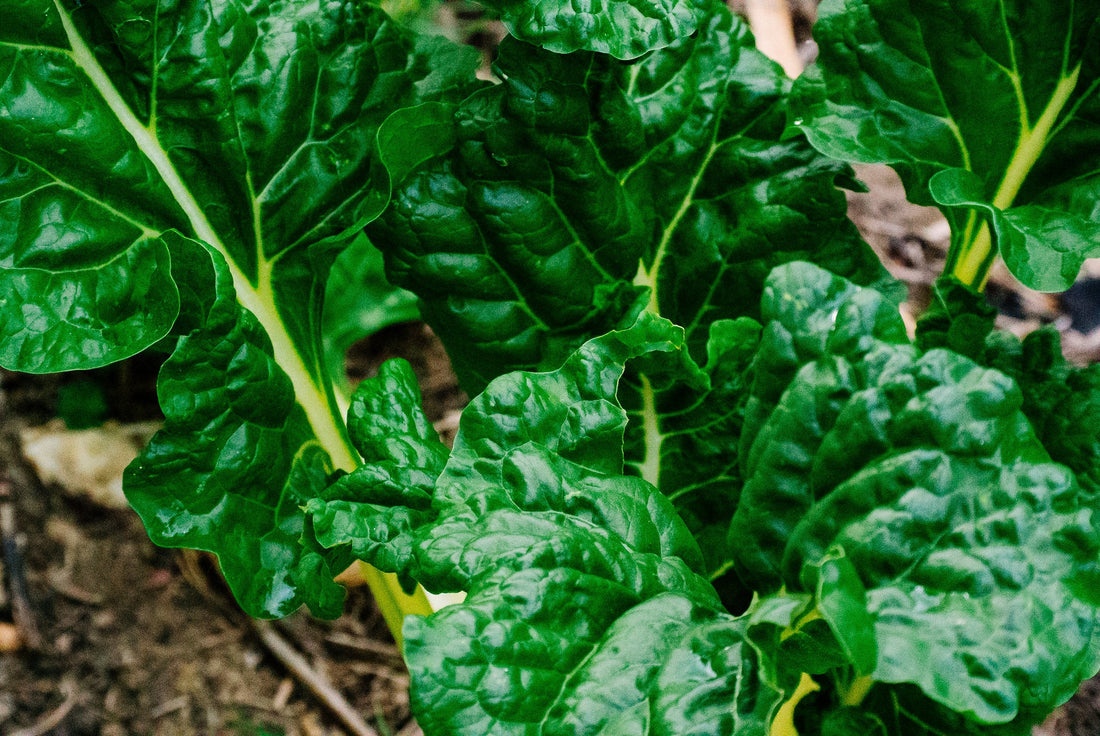
How to Grow Spinach from Seed
Spinach (Spinacia oleracea) is a nutrient-dense leafy green that’s easy to grow and versatile in the kitchen. With the right care it can thrive, yielding fresh leaves from early spring to late autumn. This guide will take you through each stage of spinach cultivation, from choosing the right variety to managing common issues.
Introduction to Growing Spinach from Seed
Spinach is an ideal crop for gardeners in the UK, as it prefers cool, mild weather. It’s packed with iron, calcium, vitamins, and antioxidants, making it a great choice for homegrown nutrition. Spinach can be harvested at various stages, whether as tender baby leaves or mature leaves, and can be grown in both open ground and containers. With successive sowing, it’s possible to enjoy a continuous supply of fresh spinach for much of the year.
Choosing the Right Spinach Variety
Spinach varieties are divided into two main types: those suited for cooler weather and those bred for summer heat tolerance. Choosing the right variety based on the season can help prevent bolting (premature flowering) and ensure a longer harvest.
- Giant Winter: A cold-tolerant variety, well-suited for autumn and winter sowing, providing robust, large leaves.
- Medania: Known for its resistance to bolting, making it ideal for spring sowing and warmer climates. Produces dark green, tender leaves.
- Matador: A versatile, hardy variety that grows well in cool temperatures, producing medium to large leaves with a mild flavour.
- Perpetual Spinach (technically a chard): Not a true spinach, but it’s highly productive and bolting-resistant, providing spinach-like leaves throughout the summer.
For continuous harvests, start with cold-tolerant varieties like Giant Winter in early spring or autumn, and switch to bolt-resistant varieties like Medania for summer.
Preparing the Soil for Spinach
Spinach thrives in fertile, well-drained soil with high organic matter. Preparing the soil properly ensures optimal growth and flavour.
- Loosen the Soil: Spinach has shallow roots, so dig or till the soil to about 20-25 cm. Remove stones and break up any clumps for even root development.
- Adding Organic Matter: Work in well-rotted compost or manure a few weeks before planting to enrich the soil. Spinach benefits from soils rich in organic matter, as it helps retain moisture and provides essential nutrients.
- Soil pH: Spinach prefers a neutral to slightly alkaline soil pH (6.5-7.5). If the soil is too acidic, adding garden lime can help raise the pH to the ideal range.
Raised beds or containers are a great option if your garden has poor drainage, as spinach does not tolerate waterlogged soil.
Sowing Spinach Seeds
Spinach seeds can be sown directly into the ground, making it a straightforward crop for both beginner and experienced gardeners.
- When to Sow: For spring crops, sow seeds from early March through May. For autumn and winter crops, sow from August to September.
- Sowing Depth and Spacing: Sow seeds 1-2 cm deep and about 5-10 cm apart. Rows should be spaced about 30 cm apart to allow good airflow and prevent disease.
- Succession Sowing: To ensure a continuous supply, sow new seeds every 2-3 weeks from March until September. This succession planting technique will provide fresh leaves throughout the season.
- Thinning: Once seedlings reach 2-3 cm in height, thin them to allow 10-15 cm between plants, ensuring adequate space for healthy growth.
Water the soil lightly after sowing to ensure the seeds remain moist, and cover lightly with soil. Spinach seeds typically germinate within 7-10 days in warm conditions.
Watering and Fertilising
Spinach requires consistent moisture and moderate feeding to thrive.
- Watering: Keep the soil consistently moist, particularly during dry periods, as spinach is sensitive to drought and can bolt if stressed. Water deeply at the base of the plants, as overhead watering can encourage disease.
- Fertilising: Spinach is a relatively light feeder, but it benefits from nitrogen-rich fertilisers, which promote leafy growth. Apply a balanced, slow-release fertiliser at planting time, or side-dress with compost every few weeks during the growing season.
If you’re growing in containers, spinach may need more frequent watering, as container soil can dry out faster than ground soil.
Managing Bolting and Growth
Spinach is prone to bolting in warm weather or when stressed, which can reduce leaf quality.
- Controlling Bolting: In warm weather, choose bolt-resistant varieties like Medania or Perpetual Spinach. Keep plants well-watered, and harvest leaves frequently to encourage new growth. Growing in partial shade can help reduce heat stress.
- Harvesting Leaves: Begin harvesting baby leaves once plants reach about 10 cm. For mature leaves, cut them from the outer part of the plant, allowing the center to continue producing. Regular harvesting helps prevent bolting and encourages continuous leaf production.
- Mulching: Apply a thin layer of mulch around plants to retain soil moisture, regulate soil temperature, and reduce weed competition.
If plants start to bolt, consider harvesting the entire plant. Bolted spinach may develop a bitter flavour, so use bolting plants in cooked dishes where the flavour is less noticeable.
Pest and Disease Management
Spinach is generally resistant to pests, but some common issues may arise. Here’s how to manage them:
- Aphids: These small insects cluster on leaves, sucking sap and weakening the plant. Use a mild soapy water spray or introduce beneficial insects like ladybirds to control aphid populations.
- Slugs and Snails: Spinach seedlings are particularly vulnerable to slugs and snails. Use organic slug pellets, copper rings, or crushed eggshells around plants as a deterrent.
- Downy Mildew: This fungus appears as yellow spots on leaves and thrives in damp conditions. Improve airflow by spacing plants properly, avoid overhead watering, and remove affected leaves promptly.
Crop rotation and good garden hygiene help prevent disease buildup and reduce pest issues.
Harvesting and Storing Spinach
Harvesting spinach at the right time ensures fresh, tender leaves.
- When to Harvest: For baby spinach, harvest leaves when they reach 5-10 cm. For mature leaves, allow plants to reach 15-20 cm. Harvest leaves regularly to encourage new growth and prevent bolting.
- Harvesting Technique: Use scissors to snip leaves from the outside of the plant, leaving the central growth intact. This allows the plant to continue producing leaves. Alternatively, you can cut the whole plant at the base if you plan to clear the bed.
- Storage: Fresh spinach can be stored in the refrigerator for up to a week in a plastic bag with a damp paper towel to retain moisture. For longer storage, blanch and freeze leaves, preserving their nutritional content and texture.
Spinach is best enjoyed fresh, but blanching and freezing excess leaves allows you to store them for use in soups, stews, and smoothies.
Common Problems and Solutions
Spinach is generally low-maintenance, but a few common issues may arise. Here’s how to address them:
- Yellowing Leaves: Often due to nitrogen deficiency or overwatering. Apply a balanced fertiliser and water only as needed to keep soil moist but not saturated.
- Slow Growth: This can result from cool soil temperatures or low sunlight. Spinach prefers mild, consistent weather, so consider covering young plants with fleece if temperatures drop.
- Bitter Flavour: Typically caused by bolting. Harvest leaves early and consistently to avoid bitterness, especially in warm weather.
Good soil management, regular harvesting, and timely interventions can help prevent these problems.
Frequently Asked Questions
Q: Can I grow spinach in containers?
A: Yes, spinach grows well in containers, especially with varieties like Perpetual Spinach. Choose a pot at least 20 cm deep and ensure regular watering.
Q: How can I prevent spinach from bolting?
A: Choose bolt-resistant varieties for warm weather, keep plants well-watered, and provide partial shade. Harvest frequently to encourage continuous growth.
Q: How long does spinach take to grow?
A: Spinach can be ready for baby leaf harvest within 4-6 weeks of sowing. For mature leaves, allow 6-8 weeks, depending on temperature and sunlight.
Summary and Additional Resources
Growing spinach can be straightforward with the right approach. Here’s a quick recap:
- Choose season-appropriate varieties like Giant Winter for autumn and Medania for warmer months.
- Prepare nutrient-rich, well-drained soil, and maintain consistent moisture levels.
- Harvest leaves regularly, manage bolting by choosing the right varieties, and use mulch to retain soil moisture.
- Monitor for pests and diseases, and practice crop rotation to maintain healthy soil.
For further reading, resources from the Royal Horticultural Society (RHS) and books like "Vegetable Growing Month by Month" by John Harrison offer valuable advice tailored to UK gardeners.
With these steps, you’ll enjoy a steady supply of fresh spinach leaves, perfect for salads, sautés, and smoothies, straight from your garden!
